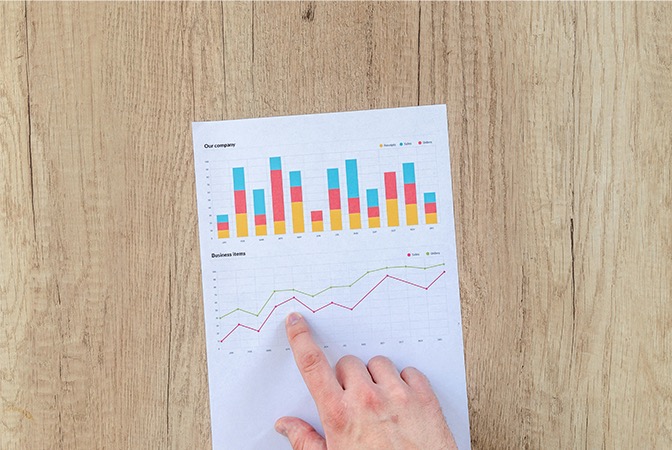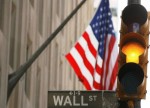
- All Instrument Types
- Indices
- Equities
- ETFs
- Funds
- Commodities
- Currencies
- Crypto
- Bonds
- Certificates
Please try another search

Safe Investment in Times of Market Volatility
Discover how to safeguard your portfolio and capitalize on economic fluctuations during market instability.

What is market volatility? Is there anything you can do about it?
This post considers some of the many economic variables that can have an impact on your investment strategy and ride out market fluctuations and the resulting unpredictability—and maybe even profit from them.
The money supply in the United States is doing something that has not happened since the Great Depression of the 1930s.
Something that, after each of the past five times it has happened since 1870, has always been followed by an economic depression and double-digit unemployment rates.
What is it?
The U.S. dollar supply, as measured by the M2 indicator, has shrunk by at least two percent following a record high. When this happened in 1878, 1893, 1921, and from 1931 through 1933, the U.S. economy went into a depression each time.
Does this mean that it’s time to sell everything? That you need to radically revise your portfolio? Or is it just an incongruent note on an otherwise upward trajectory that has some predicting that the Dow Jones Industrial Average (DJIA) will pass 40,000 this year?
What Causes Market Volatility?
As the example above shows, the supply of money in the economy can change quite a lot in a short time. Massive and sudden changes in the money supply are an example of how a fluctuation in one part of the economy can significantly affect other parts and substantially influence the environment for investors.
This is just one way an economic variable or fluctuation out of your control can greatly impact your portfolio.
Before looking at what causes market volatility, it’s important to consider how different people define it.
How Investment Professionals See Volatility
A line from the movie Wall Street offers this bit of wisdom that professional investors in the real world know well: “Don’t get emotional about stocks.”
Market trading professionals understand that assessing a company’s stock value is often like evaluating the value of a used car for purchase: it’s what is underneath the hood that is important, not how shiny the wheels are.
Therefore, these professionals tend to be analytical in their approach to a volatile market and will usually take measures to reduce their exposure to risks.
Below are three major considerations they take into account when deciding what to do when fluctuations occur.
Analyzing Company and Market Fundamentals
Investment strategists define volatility as a statistical expression measured by deviations from standard rates of return on a given investment over a certain period. These experts measure a given market’s volatility through metrics like how it performs on the Standard and Poor’s (S&P) 500 or the DJIA.
Accordingly, a professional investor will often see volatility in stocks that experience rapid and significant price changes and heavy trading activity.
Other sources of volatility that professional strategists watch for when planning for their investments cover broader considerations than stock performance. These professionals consider how the long-term effects of worldwide environmental change can affect national economies and global markets.
For example, in today’s environment, the following factors can all contribute to volatility in markets.
Global Events and Economic Policy
International tensions and conflict directly and indirectly impact the prices and availability of important commodities like food and petroleum. Unrest in major producing regions can disrupt supply chains and drive up prices for everyday goods, which can affect global trade, investment, and the overall economy. Economic sanctions and boycotts can also dramatically change your financial strategy and investment goals.
On the other hand, higher inflation affects consumer spending choices, which in turn affects how markets behave. Furthermore, policies aimed at influencing specific markets or industries can have unintended consequences, leading to price fluctuations or shortages.
Other Volatility Factors
The above considerations are among the more important ones that professional investment brokers and analysts factor into their decision-making, but they are not the only ones. Other factors include:
- The effects of changing technology on a company or market.
- Natural disasters or extreme weather events.
- Changes in the level of investor and consumer trust placed in an industry.
- Changes in the level of trust placed on the legal system.
How Independent Traders Can See Volatility
Not all investors see the market through the prism of statistical analysis and percentage ranges. The beauty of online trading today is that many investors can and do make buying and trading decisions entirely on their own without the benefit of professional advice or analysis.
As you may imagine, these independent investors and traders can interpret market volatility differently based on different evaluation criteria.
Although you certainly do not need to be a professional investment advisor to invest in the market, not having access to specialized knowledge and experience can make the individual investor susceptible to experiencing volatility with a short-term focus:
- Following a stock’s price fluctuations every day, for example, without understanding what is driving those up-and-down changes, can be frustrating and feel like riding a roller coaster in the dark. The desire to get off soon becomes more compelling than getting your money’s worth from your ticket.
- Seeing, hearing, and reading the news about what is happening domestically and globally can be depressing and alarming, especially if you do not have the benefit of deeper analytical tools that can help you understand which places in the world are high risk and which others have the potential for high rewards in a time of changing global political and military arrangements.
- A lack of hard investment data and in-depth analysis can make the lone investor susceptible to unconscious psychological influences. This can too often lead to investing decisions based on the emotion of fear: fear of missing out on “the next big thing” in the market without truly knowing whether it is what it has been built up to be or fear of losing everything after a stretch of lean returns or losses and bailing out of the market when a more patient approach would yield better results.
This is not to say that individual investors are like lemmings, following the herd without thinking for themselves about its direction and destination.
It is to say, however, that if you are on your own in the market, or if you are surrounded by and taking investment advice from people who do not know any better than you do, you are at an inherent disadvantage in the market generally, and especially so when market volatility leads to price fluctuations.
How to Deal With Market Volatility as a Lone Investor
If you do not have the help of a professional investment advisor, there are still steps you can take to make sure that you make the best financial decisions for you in a fluctuating market. Here are some time-proven, effective strategies you can use with or without the assistance of a broker or financial advisor.
Take a Long-Term Look at the Market
A graph of the history of market investing will not show you a straight line of ascending value. “Bear” markets exist as well as “bull” markets and tend to be cyclical, so no matter how savvy you may be as an investor, there will still be times when stock values decline through this baked-in form of volatility.
Although it is not a hard rule, hanging on to a stock experiencing short-term volatility is often better. This is particularly true if the remainder of your portfolio is adequately diversified.
By contrast, if you do “bail out” on a particular company or market sector in your investing, you will still face the daunting challenge of knowing when it is safe to start reinvesting. To some degree, a willingness to put up with uncertainty is necessary for successful long-term investing.
Although no guarantee exists that simply holding onto a stock for a long time will inevitably see it increase in value, and watching a significant short-term drop in share price can make you want to run for the exits, if the company fundamentals are sound, then in many cases, those who ride out temporary fluctuations in stock value will come out ahead in the long term.
In some cases, volatility can even present an opportunity to acquire more stock in a company that you have confidence in.
Review Your Risk Strategy
Any time you see volatility in a company or market sector, it is a good time to consider where you are in your tolerance for risk. Sometimes, short-term fluctuations can be a symptom of a longer-term instability that might make a safe investment choice from the past less secure today or tomorrow.
Consider Diversifying Your Portfolio
If your own analysis of short and long-term risk indicates that some changes or rebalancing are necessary in your portfolio, you can proceed accordingly. Just be sure to keep in mind the point above about a long-term focus and remember that successful long-term investing takes a certain level of courage and the willingness to accept some calculated risk.
Alternatives to consider, especially in higher-risk volatility situations, include bonds and certificates of deposit that offer a fixed rate of return that is not subject to the same fluctuations as your dividends might be in stock investment.
Consider Dollar-Cost Averaging
Dollar-cost averaging means that you invest a set amount of money to invest at regular intervals without factoring in stock fluctuations and short-term volatility. This method has the advantage of reducing the temptation to start making emotional decisions about buying, thereby encouraging a long-term investment approach that reduces the impact of that short-term volatility.
Dollar-cost averaging works well with investments like individual retirement accounts and employer 401(k) plans, which often take a part of your pre-tax earnings on a regular basis.
Another potential benefit of dollar-cost averaging is that even in a bear market, the same amount of money you invest every month often buys more stock than it would have before. When the market returns to “bull” status, those extra shares can work to your benefit by producing returns.
Consider Bolstering Your Liquid Assets
Times of market instability are often also times of instability in other areas of life, including your employment situation and sometimes unexpected life events and costs. If the market is down, it is always a good idea to make sure that you have enough savings in reserve to carry you through an emergency.
Consider Consulting With a Financial Advisor
People who are rugged individualists and self-made success stories are often the source of inspiring stories. But not everyone works best alone.
By being an investor, you are already expressing confidence in others to benefit you through their efforts. Working with a financial advisor is basically the same thing: you are relying on the investment professional you work with to benefit you by bringing more value to your portfolio than you can on your own.
Whether it is to maximize your returns in the good times or to help you ride out the bad times with minimal risk or loss, an experienced financial advisor can be your value-added force multiplier—even if the presence is online or by telephone.
Investing involves risk and your investment may lose value. Past performance gives no indication of future results. These statements do not constitute and cannot replace investment or financial advice.




